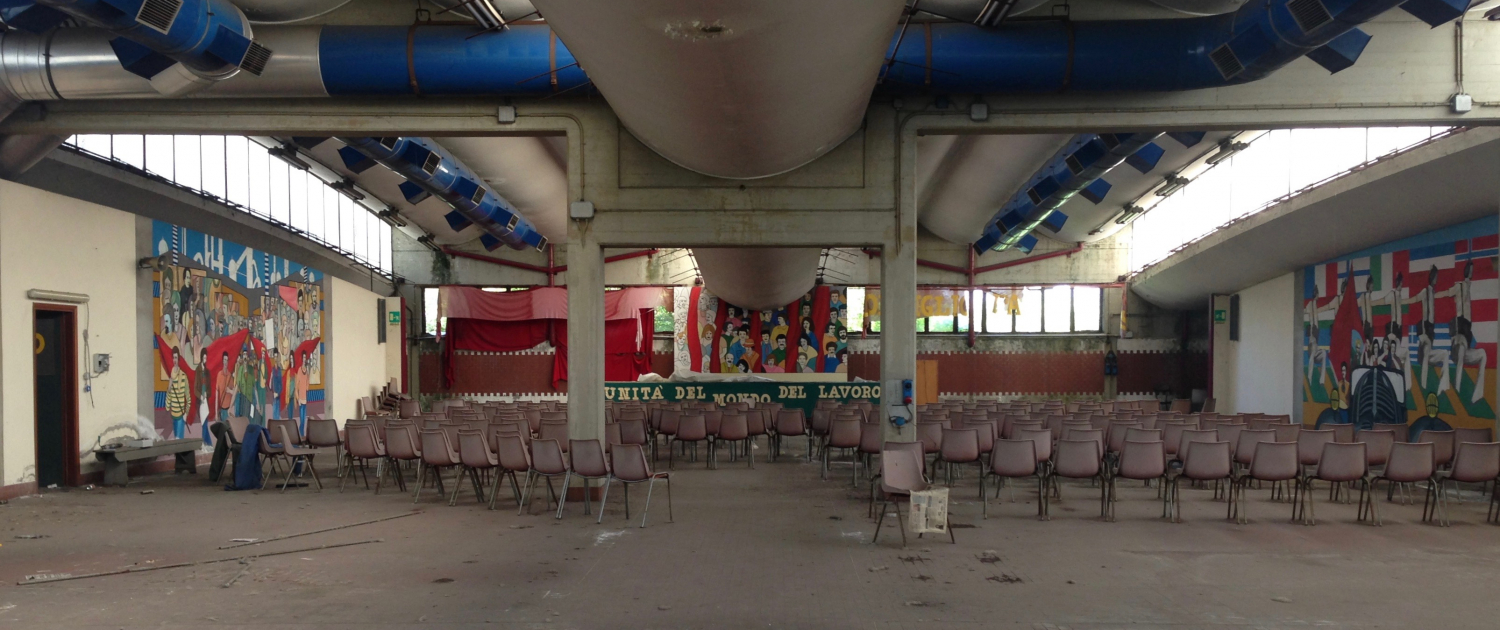By Steven High
Our Deindustrialization and the Politics of Our Time (DePOT) project recently organized the first of two roundtables on emerging perspectives in the international field of deindustrialization studies. Nine authors/editors of recently published books or special issues spoke for seven minutes each to their main contributions to the field. It was an inspiring line-up, offering us a real sense of where the field is at and where it is going. Among the new perspectives that emerged, I would like to highlight three ways that the new scholarship is bridging old historiographic divides.
Bridging national histories and language divides
The first point that I would like to make is that much of the new scholarship bridges national histories and language divides. Brexit, Trump and the rise of right-wing populism have shown us that the political and economic forces at work are transnational, though they unfold differently across time and space.
We saw this intentional bridging in a variety of ways but most directly, perhaps, in American historian Tracy Neumann’s book Remaking the Rust Belt: The Postindustrial Transformation of North America, which compares two former steel towns – one located in the United States (Pittsburgh) and the other in Canada (Hamilton). In doing so, it challenges the normalization that often results in a single locality or regional study. Her specific focus is primarily on local growth coalitions in the postindustrial aftermath. As she draws a sharp distinction between deindustrialization and postindustrialism, I would have liked to hear her thoughts on the relationship between these two concepts at the roundtable.
A similar impulse animated French historians Marion Fontaine and Xavier Vigna in editing their special issue on “La désindustrialisation, une histoire en cours” in 20 & 21: Bulletin d’histoire, a key historical journal in France. While they primarily showcase the work of French historians of deindustrialization, they also reached out to a handful of scholars (including myself) who normally write in Italian or English to contribute. These articles were then translated into French, a rare opportunity to cross the linguistic divide. I wish English-speaking scholars would reach out in this way more often. When I asked Fontaine during the session how the French scholarship compares to that of other countries, she replied that the historical sources and methodologies used are quite different. Due to extensive public ownership, there are corporate records available to a far greater degree than in North America. At the same time, there has been a reluctance in France to use oral history – something the editors sought to challenge in their special issue.
Oral history was also the basis of a special issue on “(Post-)Industrial Memories. Oral History and Structural Change,” co-edited by Stefan Moitra and Katarzyna Nogueira, in the German journal Bios. It was only the second time in the journal’s history that an issue was published in a language other than German – which reflects the fact that it originated in the European Labour History Network, formed in 2015, and a transnational conference held the following year in Bochum. Though the individual contributions were mostly local or regional in scope, Moitra pointed out that the special issue was profoundly transnational in the way these studies were curated and put into conversation. As the co-editors are based in the museum sector, the special issue also bridges the divide between university and community-based research. It was therefore telling that Moitra shared an example from one of the chapters where a conflict emerged over interpretative authority between former workers now employed as museum interpreters and professional curators at one industrial heritage site.
Industrial heritage was likewise the subject of Stefan Berger’s edited volume, Constructing Industrial Pasts: Heritage, Historical Culture and Identity in Regions Undergoing Structural Economic Transformation, which offers us a series of regional case studies from across Europe as well as China and Australia. This global lens allowed Berger to identify three regimes of industrial heritage in his presentation. The first, evidenced in English-speaking countries where neo-liberalism has been strongest, has seen few state attempts to undertake industrial heritage from above. Heritage initiatives have therefore come from below to counter this silence. In continental Western Europe, by contrast, which is more corporatist, the state was more involved, and so we see an effort to construct a consensual heritage discourse that justifies deindustrialization. And finally, in China, we see the functionalization of industrial heritage to legitimate continued communist rule. The same was true in Eastern Europe before the collapse of the Eastern Bloc.
The other panellist that bridged geographic divides was historian Ewan Gibbs, who published his book Coal Country. The Meaning and Memory of Deindustrialization in Postwar Scotland (free to download) on the deindustrialization of the Scottish coalfields. Though his book focuses on a single region (or nation), he situates his book within a wider comparative perspective. As he noted, the divergent politics in Wales, Northern England, and Scotland raise questions about the “Rust Belt rebellion” thesis that has dominated the media since Brexit and the election of Donald Trump. Gibbs then spoke of “rolling deindustrialization” across the Scottish coalfields, beginning as early as the 1940s and the crushing of moral economy customs in the 1980s and 1990s. Nationalism was central to how Scottish working-class communities responded to this crisis, not unlike how Canadian workers responded to their American bosses who closed their plants during these same years, as I’ve shown in my own work.
BRIDGING RACE AND CLASS
The second point that I would like to raise here relates to the ways that deindustrialization scholars are seeking to bridge the chasm between race and class analysis. The whiteness of deindustrialization studies speaks to this wider bifurcation, both in history and in the historiography. The coding of the working-class as white is an ongoing problem. Geographer Jason Hackworth’s Manufacturing Decline: How Racism and the Conservative Movement Crush the American Rust Belt examines dereliction in dozens of cities across the US Rust Belt. He is particularly interested in the kind of extreme land abandonment that we most associate with Detroit. Hackworth argues that dereliction is not simply about job loss but that race is also a key variable. Redlining, over-policing, and racial capitalism more generally are key drivers of extreme land abandonment. Urban decline, like deindustrialization, was planned, and political decision-making was motivated as much by race as anything else.
In turn, Mike Waite’s book On Burnley Road: Class, Race and Politics in a Northern English Town offers a grounded analysis of the rise of the populist right in the former textile town of Burnley in England’s deindustrialized North. Waite worked for the local town council, giving him a front row seat. When race rioting broke out in 2001, Burnley was seen as an aberration and was therefore explained away. But now it is increasingly viewed as a precursor to a wider political trend. Accordingly, he reminds us that local political actors are important – and that these political changes are not just visited from above and beyond but are often the accumulated result of local histories. Waite also speaks of how local institutions were hollowed out first by deindustrialization and then by austerity. It is another important contribution to the scholarship.
BRIDGING A DIVIDED WORKING CLASS
Third, the round-table panel revealed the ways that the new scholarship bridges the study of deindustrialization and the labour history that comes after. Sociologist Cédric Lomba’s study of ArcelorMittal in Belgium, entitled La restructuration permanente de la condition ouvrière, examined what it was like for steel workers who continued to work in a downsizing industry where there was constant uncertainty as production was concentrated at fewer and fewer sites of production. We therefore get a strong sense of how industrial restructuring is experienced by the remaining industrial workforce and the ways that work-life trajectories are ruptured and experiences differed. It is a book with considerable insight, deepened by the fact that Lomba’s father was himself a steelworker and worked for the same company.
Finally, class decomposition and re-composition is the subject of Gabriel Winant’s book The Last Shift: The Fall of Industry and the Rise of Health Care in Rust Belt America, which invites us to consider how industrial decline was bound-up with the rise of the care economy. During the post-war boom, collectively bargained upward mobility led to the dramatic expansion of private health insurance in the United States. Health care employment has a distinctive geography and its low wages meant that it is highly racialized. Subsequent deindustrialization has led to growing ill-health in deindustrialized areas like Pittsburgh, which is the focus of his study, that are poorer and older than elsewhere. Winant notes that kinship networks are also disrupted as the young leave to find work elsewhere. Overall, he makes a compelling case for deindustrialization scholars to broaden our analysis from industrial workers to consider the wider re-composition of the multi-racial working-class.
I will be curious to see how these first nine works compare to the second part of this round-table series. It is a sign of the incredible vibrancy of deindustrialization studies that we can showcase another eight recently published books on June 18th. Looking at the next line-up, I see points of connection and divergence from the first round-table. Hungary, Finland, Italy and the Balkans will be brought into the conversation as will casinos and punk rock. Gender, so far largely absent from our conversation, will too. The industrial corporation, also absent this week except for Lomba’s contribution, will be more central. And, race and class will remain a key element. Together, these 17 recently published works offer a comprehensive picture of where the field is going.





